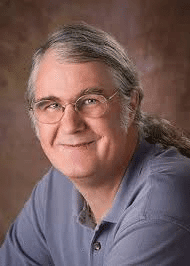Oram Miller
Certified Building Biology Environmental Consultant and Electromagnetic Radiation Specialist
Topic: 5G Technology
The 5G that everyone fears is in the high, millimeter Wave (mmWave) band (above 20 GHz) and it is beam-formed. That type of 5G is only being deployed on certain streets in downtowns of select major cities and only on certain streets in residential neighborhoods near downtowns in those select cities. It is also being deployed in sports stadiums, arenas, airports, college campuses, metro stops and other places where large numbers of people congregate.
That mmWave 5G signal is on-demand, meaning it is only transmitted when a smart phone enabled with 5G for mmWave service in one house asks for a connection. That cell signal is only 10 degrees or so wide. If you live next door to the house where that 5G-enabled phone is calling for service and you don’t have one of those phones yourself, that signal to your neighbor’s 5G-enabled phone will not come into your house.
As of 12/31/19, the mmWave type of 5G service is only offered by Verizon on certain streets near downtowns in 31 cities, by T-Mobile on certain streets near downtowns in 6 cities, and by AT&T, as 5G+, on certain streets near downtowns in 25 cities (but only to business customers thus far). All three cell carriers are planning to expand their mmWave 5G service in each city they currently serve and in new cities.
You lose the mmWave 5G connection on a 5G-enabled phone when you move the phone around. When you move the phone, it connects back to 4G LTE service. 5G is primarily for downloading data, not voice service.
The bulk of 5G service in the US, on the other hand, is being broadcast in the low and mid bands (600 MHz to 6 GHz) from 5G as well as updated 4G LTE-Advanced radios and transmitters. These are being placed at existing 4G LTE cell sites, which are located roughly 1-1.5 miles apart, and in residential neighborhoods as small cell antennas. Existing 4G antennas transmit cell signals up to 1,000 Watts spraying always-on RF signals out into a neighborhood in a cone that is roughly 120 degrees wide. (Continue reading)
Oram Miller, BBEC, EMRS is a Certified Building Biology Environmental Consultant and Electromagnetic Radiation Specialist based in Los Angeles. He received his certifications from the Building Biology InstituteTM (BBI) in Santa Fe, New Mexico.
Oram provides on-site healthy home and office EMF evaluations for clients throughout Southern California who have electro-magnetic sensitivities, as well as those who want a healthier home or office. This includes real estate transactions, where he is part of the inspection team for clients interested in knowing EMF levels prior to purchase. He also provides telephone consultations for clients nationwide.
Oram consults on the healthy design and construction of new and remodeled homes. He writes extensively on the health hazards of EMFs on this website and provides healthy home lectures. He has been interviewed on numerous radio programs and podcasts on the topic of EMFs and healthy homes.
Show highlights:
Oram explains what Bau Biology is and the history of it
How does Oram’s clients know that they’re electrically sensitive?
How to find a building biologist near you
The biggest problem with EMF in the home is the overuse of cell phones; Oram shares some ways to hard wire in devices and making them safer by placing them in airplane mode
Oram touches on the subject of 5G technology
Oram Miller, EMF specialist gives us some good tips on navigating our way through these challenges today, February 24, 2020




'Oram Miller – Creating Safer Spaces for Those with Electrical Sensitivities – February 24, 2020' has no comments
Be the first to comment this post!